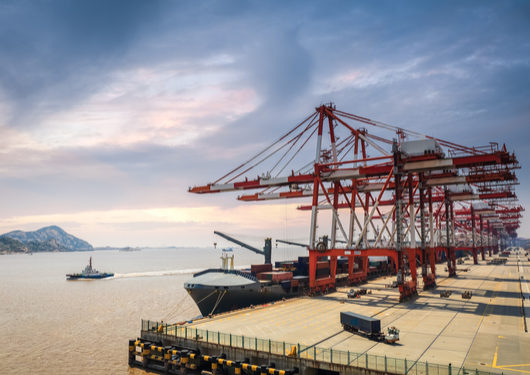
So far, economic performance doesn’t seem to have been negatively affected by political turmoil the world over, and in the U.S. in particular. Growth in this country should be in the range of 3 percent this year and next, said Nariman Behravesh, chief economist with IHS Markit. The Eurozone, only recently in danger of becoming a basket case, is experiencing its strongest growth since 2007. Even Japan, struggling for decades to rescue a foundering economy, is showing positive results, with eight consecutive quarters of growth.
Global GDP chalked up growth of 3.2 percent in 2017 and is on track to approach 3.5 percent this year — the best since 2010, Behravesh told the recent TPM Annual Conference in Long Beach, Calif., sponsored by IHS Markit.
What’s the cause of all this good news? In the U.S., Behravesh credits tax reform for at least part of the positive results. He believes tax cuts will boost growth by 0.3 percent over the next two years. In addition, Congress this year has avoided a repeat of the debt-ceiling crisis, which has in the past led to a government shutdown.
The U.S. unemployment rate, which hit 4.1 percent at the end of 2017, will sink even lower, to around 3 percent, Behravesh predicted. That would be the lowest number since the Korean War. (The current level is already considered by some economists to effectively constitute full employment.)
Europe is on a roll as well, but faces “a potential existential threat.” The fallout from Brexit is far from complete, although there are signs of eroding business confidence in an independent U.K. In Italy, populist parties on both left and right could have a destabilizing effect on that country’s already shaky economy.
China, the world’s economic juggernaut in recent years, is slowing somewhat. Its days of double-digit growth are likely over. The nation’s economy grew 6.7 percent in 2016 and 6.9 percent in 2017, and Chinese leaders are aiming for 6.5 percent this year. An aggressive government anti-pollution campaign, high levels of debt and a desire to reduce speculation in the housing market are all factors that could slow economic momentum in coming years. Within 10 years, Behravesh predicts, China will only be able to manage annual growth of around 5 percent. (Which would still make it an outperformer compared to most other countries.)
At some point, however, economic cycles have to kick in — booms are followed by busts, and vice versa. Behravesh identified a number of risks that could accelerate that transition. Unexpected factors could combine to drive the U.S. inflation rate, currently projected at 2.38 percent for 2018, to as high as 4 percent, which would prompt the Federal Reserve to step on the brakes.
“The traditional way of U.S. expansions,” said Behravesh, “is that they don’t die of old age. They get killed off for three reasons: asset bubbles bursting, oil shocks, and policy mistakes.”
Behravesh worries that new tariffs and protectionism could touch off a widescale trade war that would be a “disaster” for the U.S. and its trading partners. Rejecting an assertion by President Trump that trade wars “are good, and easy to win,” Behravesh declared that “they’re a terrible thing, and impossible to win.”
Transportation executives appearing at the TPM conference agreed. Nicolas Santini, chief executive officer of APL, expressed concern that Chinese retaliation against U.S. tariffs on steel could have a serious impact on U.S. manufacturers, in particular The Boeing Company. “It’s going to create a lot of pain,” he said.
Tom Behrens-Sorensen, former executive with A.P. Moller-Maersk Group and now chair and chief executive officer of Behrens-Sorensen Advisory P/S, said a series of retaliatory tariffs between major nations “could take global trade significantly down, if not nip it in the bud.” In light of China’s recent action, however, the prospect of an early ceasefire to the Trump-triggered trade war seems increasingly unlikely.
If current economic trends continue, then trading nations will likely experience positive results for the next several years. The U.S. and global recovery, said Behravesh, “has legs, and left to its own devices will likely be able to sustain at least through 2019, and maybe into 2020.”
Should U.S. growth continue steadily to July of 2019, the country will have achieved the longest period of expansion in its recorded history, reaching back to 1850. “If,” warned Behravesh, “we don’t mess things up.”







